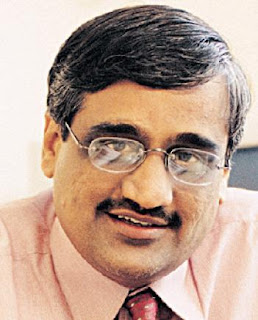One needs to understand that any country, which aspires to be a global power, cannot remain indefinitely dependent on the outside world for too long (during the period 2004-2007, India’s defence import  expenditure stood at whopping $10.5 billion. India is the third largest arms importer in the world; among the developing countries, it tops the list of defence hardware). India’s current dependence on foreign arms is quintessentially a stopgap arrangement before it can attain the expertise to stand on its own feet in terms of arms production. It is this realisation, which has led the government to reform the Indian arms manufacturing industry. Much in consonance with the DRDO objectives of achieving 70% indigenization in defence production by 2005 (unfortunately, only 30% has been achieved till date); guided by the recommendations of Dr. Vijay L. Kelkar committee (constituted in 2004) and Associated Chambers of Commerce and Industry of India (ASSOCHAM) 2007 paper titled ‘Avenues for Private Sector Participation in Defense’, the government finally decided to undertake revolutionary measures to chaperon the Indian private firms into hallowed precincts of the Indian defence. That the government has finally agreed to grant the status of “Raksha Udyog Ratan” (RUR) status to a selected few Indian companies, to provide products and services support to the Indian armed forces, is indeed an unprecedented step in the history of independent India. According to Brigadier Khutab Hai, CEO, Mahindra Defence Systems, “We should be allowed to develop high-tech weapons platforms by benefitting from R&D funding, sharing knowledge with the DRDO and working with the services headquarters to have a clear idea of their requirements well ahead of time.”
expenditure stood at whopping $10.5 billion. India is the third largest arms importer in the world; among the developing countries, it tops the list of defence hardware). India’s current dependence on foreign arms is quintessentially a stopgap arrangement before it can attain the expertise to stand on its own feet in terms of arms production. It is this realisation, which has led the government to reform the Indian arms manufacturing industry. Much in consonance with the DRDO objectives of achieving 70% indigenization in defence production by 2005 (unfortunately, only 30% has been achieved till date); guided by the recommendations of Dr. Vijay L. Kelkar committee (constituted in 2004) and Associated Chambers of Commerce and Industry of India (ASSOCHAM) 2007 paper titled ‘Avenues for Private Sector Participation in Defense’, the government finally decided to undertake revolutionary measures to chaperon the Indian private firms into hallowed precincts of the Indian defence. That the government has finally agreed to grant the status of “Raksha Udyog Ratan” (RUR) status to a selected few Indian companies, to provide products and services support to the Indian armed forces, is indeed an unprecedented step in the history of independent India. According to Brigadier Khutab Hai, CEO, Mahindra Defence Systems, “We should be allowed to develop high-tech weapons platforms by benefitting from R&D funding, sharing knowledge with the DRDO and working with the services headquarters to have a clear idea of their requirements well ahead of time.”
For Complete IIPM Article, Click on IIPM Article
Source: IIPM Editorial, 2006
An IIPM and Management Guru Prof. Arindam Chaudhuri's Initiative
Home Campus Tour Contact Us Sitemap IIPM Think Tank IIPM National Brochure IIPM in Media India Today & Tomorrow
Strategic Alliance / Consulting / Intellectual Tic-up Partners Arindam chaudhuri GIDF Planman Consulting Business & Economy 4Ps Business & Marketing The Sunday Indian The Daily Indian Kkoooljobs.com
 expenditure stood at whopping $10.5 billion. India is the third largest arms importer in the world; among the developing countries, it tops the list of defence hardware). India’s current dependence on foreign arms is quintessentially a stopgap arrangement before it can attain the expertise to stand on its own feet in terms of arms production. It is this realisation, which has led the government to reform the Indian arms manufacturing industry. Much in consonance with the DRDO objectives of achieving 70% indigenization in defence production by 2005 (unfortunately, only 30% has been achieved till date); guided by the recommendations of Dr. Vijay L. Kelkar committee (constituted in 2004) and Associated Chambers of Commerce and Industry of India (ASSOCHAM) 2007 paper titled ‘Avenues for Private Sector Participation in Defense’, the government finally decided to undertake revolutionary measures to chaperon the Indian private firms into hallowed precincts of the Indian defence. That the government has finally agreed to grant the status of “Raksha Udyog Ratan” (RUR) status to a selected few Indian companies, to provide products and services support to the Indian armed forces, is indeed an unprecedented step in the history of independent India. According to Brigadier Khutab Hai, CEO, Mahindra Defence Systems, “We should be allowed to develop high-tech weapons platforms by benefitting from R&D funding, sharing knowledge with the DRDO and working with the services headquarters to have a clear idea of their requirements well ahead of time.”
expenditure stood at whopping $10.5 billion. India is the third largest arms importer in the world; among the developing countries, it tops the list of defence hardware). India’s current dependence on foreign arms is quintessentially a stopgap arrangement before it can attain the expertise to stand on its own feet in terms of arms production. It is this realisation, which has led the government to reform the Indian arms manufacturing industry. Much in consonance with the DRDO objectives of achieving 70% indigenization in defence production by 2005 (unfortunately, only 30% has been achieved till date); guided by the recommendations of Dr. Vijay L. Kelkar committee (constituted in 2004) and Associated Chambers of Commerce and Industry of India (ASSOCHAM) 2007 paper titled ‘Avenues for Private Sector Participation in Defense’, the government finally decided to undertake revolutionary measures to chaperon the Indian private firms into hallowed precincts of the Indian defence. That the government has finally agreed to grant the status of “Raksha Udyog Ratan” (RUR) status to a selected few Indian companies, to provide products and services support to the Indian armed forces, is indeed an unprecedented step in the history of independent India. According to Brigadier Khutab Hai, CEO, Mahindra Defence Systems, “We should be allowed to develop high-tech weapons platforms by benefitting from R&D funding, sharing knowledge with the DRDO and working with the services headquarters to have a clear idea of their requirements well ahead of time.”For Complete IIPM Article, Click on IIPM Article
Source: IIPM Editorial, 2006
An IIPM and Management Guru Prof. Arindam Chaudhuri's Initiative
Home Campus Tour Contact Us Sitemap IIPM Think Tank IIPM National Brochure IIPM in Media India Today & Tomorrow
Strategic Alliance / Consulting / Intellectual Tic-up Partners Arindam chaudhuri GIDF Planman Consulting Business & Economy 4Ps Business & Marketing The Sunday Indian The Daily Indian Kkoooljobs.com




